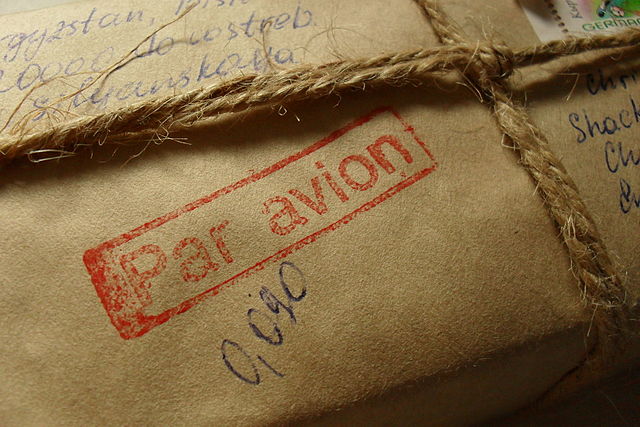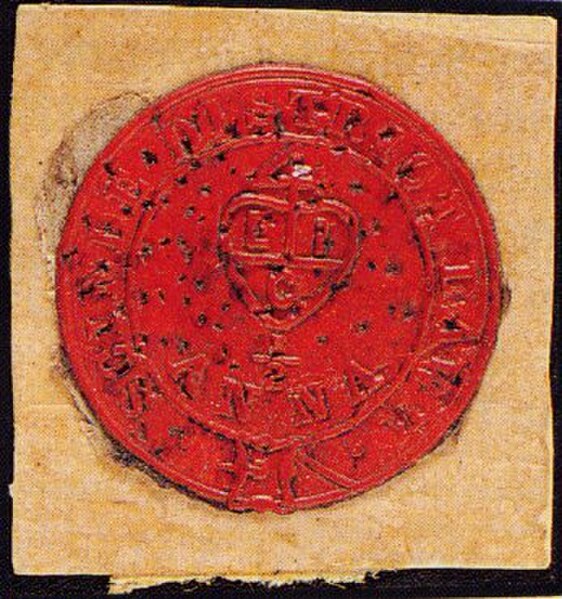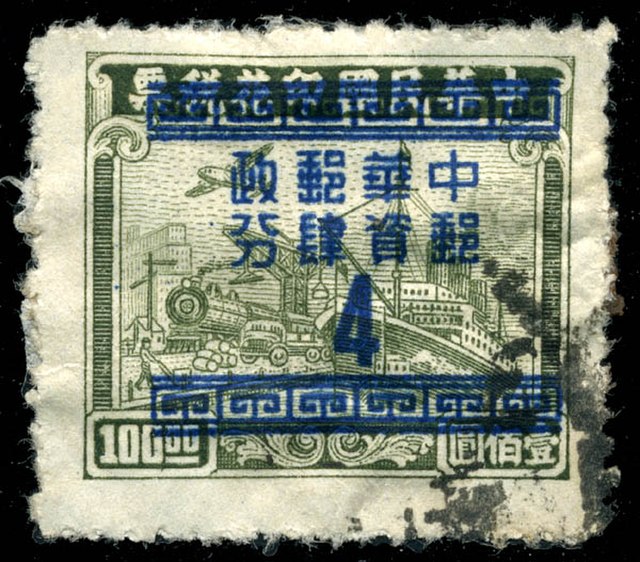Airmail is a mail transport service branded and sold on the basis of at least one leg of its journey being by air. Airmail items typically arrive more quickly than surface mail, and usually cost more to send. Airmail may be the only option for sending mail to some destinations, such as overseas, if the mail cannot wait the time it would take to arrive by ship, sometimes weeks. The Universal Postal Union adopted comprehensive rules for airmail at its 1929 Postal Union Congress in London. Since the official language of the Universal Postal Union is French, airmail items worldwide are often marked Par avion, literally: "by airplane".
Airmail instructional mark on a parcel from Kyrgyzstan
1912 German airmail between Bork and Brück
A cover carried on a 1932 first flight in the north woods of Canada, with a cachet and franked with both a regular and an airmail stamp
Study for The First Official Airmail Flight (1941), mural by Dorothea Mierisch at the post office in McLeansboro, Illinois
The mail or post is a system for physically transporting postcards, letters, and parcels. A postal service can be private or public, though many governments place restrictions on private systems. Since the mid-19th century, national postal systems have generally been established as a government monopoly, with a fee on the article prepaid. Proof of payment is usually in the form of an adhesive postage stamp, but a postage meter is also used for bulk mailing.
A postman collecting mail for delivery
Many early post systems consisted of fixed courier routes. Here, a post house on a postal route in the 19th century Finland
The use of the Scinde Dawk adhesive stamps to signify the prepayment of postage began on 1 July 1852 in the Scinde/Sindh district, as part of a comprehensive reform of the district's postal system.
China 4-cent on 100-dollar silver overprint of 1949








